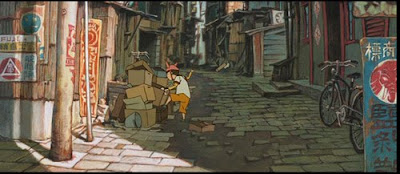"There is nothing wrong with good schmaltz, nothing wrong with good heart... The critics think I'm kind of corny. Well, I am corny. As long as people respond to it, I'm okay." —Walt Disney
Why we go to the movies
High concept movies are usually sold on the extraordinary like aliens, dinosaurs, incredible battle or action scenes, 3D, an obscure alternate reality or the most unusual love story ever told. In short, seemingly original/unique concepts are the selling point. This way of thinking is matched when you ask mainstream audiences why they choose to pay the admission for a certain film: they say that they want to see something new (unless, of course, they must see a sequel just because they’ve seen the “original”). And they want to be entertained.
But in fact, the novelty factor is not only no indication if a movie is any good, it usually has nothing to do with whether the audience likes a film. That’s the marketing tool, to get as many people in before they know if it is worthwhile.
Then the word-of-mouth sets in which is purely based on audience experience during the film. And this usually depends on emotional involvement with the characters and the story. Obviously we get most easily involved when we see aspects of ourselves in a character, when we identify with a character. It certainly helps if we can look up to character (wishing we were like them) or pity them.
On a side note: People often complain about aliens that look and think like humans rather than wholly original beings, yet the less we emotionally understand about such characters the harder it is to get involved in their interaction and we feel like outside spectators. In fact, movies that treat characters like pawns in a game like Kubrick’s 2001 or The Killers are not embraced by mainstream audiences (unless they have finally become critic-proof classics), no matter how brilliant the concept and execution. Of course, art-house films may have other goals than audience identification, but here I’m looking at the mechanics of films conceived as crowd-pleasers.
Entertainment
So what drives us into the theater in the first place is something different than what keeps us interested in the film once it started. Our conscious expectation of entertainment is based on spectacle and novelty while we unconsciously expect to be moved emotionally by the story. If either one of these expectations is not fulfilled (especially if we're not moved), we are disappointed with the film and do not recommend it even though we may remember a couple of great scenes when someone mentions the title.
Paradoxically, even if we like a film, often, the first thing that comes to mind is not necessarily an emotional plot point but an excessive scene that is not even advancing the story. Be it a song in a musical, Hannibal’s elevator stunt in The Silence of the Lambs or Indiana Jones’ shooting the sword guy. Sometimes these scenes are not even character related like the Pink Elephants in Dumbo.
Once we’ve seen it, we couldn’t imagine the film any other way, but the scene itself doesn’t contribute to the story anything else than mask the unconsciousness that led to Dumbo waking up on a tree. He could just pass out and wake up in the tree. But this excess bit of entertainment is what many people consider their favorite scene. This scene may make the film memorable and unique, it certainly doesn’t make it a great film, though. So spectacle in itself can be entertainment (“cinema of attractions”), but only on the surface without really involving us any deeper.
 The basic story
The basic storyEven though Dumbo was originally marketed on the premise of spectacle (“a flying elephant”) and a parade of entertaining characters like acts in a circus revue (see poster on the left), neither the novelty factor nor the funny supporting characters are the reason for Dumbo’s enduring success with audiences of all ages. It is still popular because it is emotionally satisfying. As I have said, there is more to it than just good film making, the emotions come from the very basic story, i.e. how these characters interact with each other.
As an experiment, here’s a summary of the basic story without the words “elephant”, “circus”, “ears” or “flying”:
Young Dumbo’s self-confidence is low. All his life he has been ridiculed for his physical deficiencies. The good-natured youngster’s only moments of happiness are with his mother. When he is separated from her because she defended him against a bully, he finds a friend in Timothy, a loner with a heart of gold. While Dumbo is gradually getting himself cast out from society, Timothy tries to raise Dumbo’s self-esteem by arranging a chance for him to redeem himself. But due to Dumbo’s physical handicap he gets cast out from society. After a visit to Dumbo’s mother in jail, he and Timothy accidentally get drunk and wake up in a far off neighborhood. With the help of a group of confident outcasts they discover that due to his physical deficiencies Dumbo possesses extraordinary skills that enable him to redeem himself, rehabilitate his mother and seemingly help the whole community.Although Dumbo himself is directly interacting with all social groups and characters, the bare-bone story comes down to two core-relationships: Dumbo – his mother and Dumbo – Timothy.
In my opinion, they are the true heart of the film.
To be continued…

























































